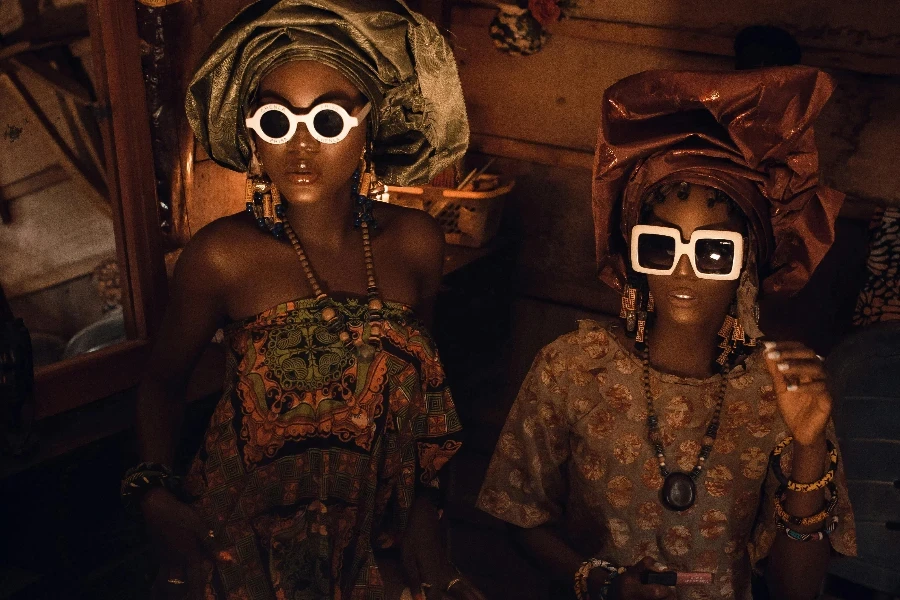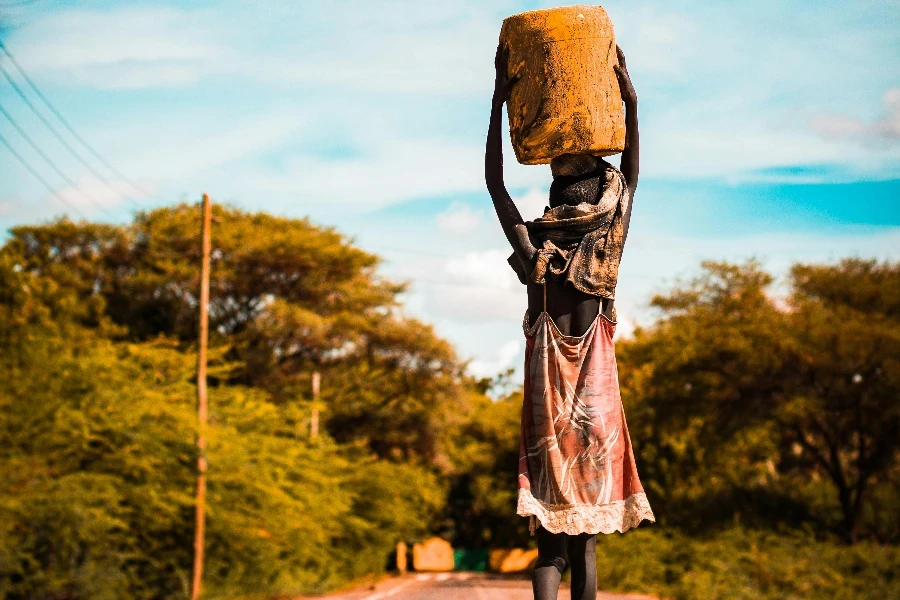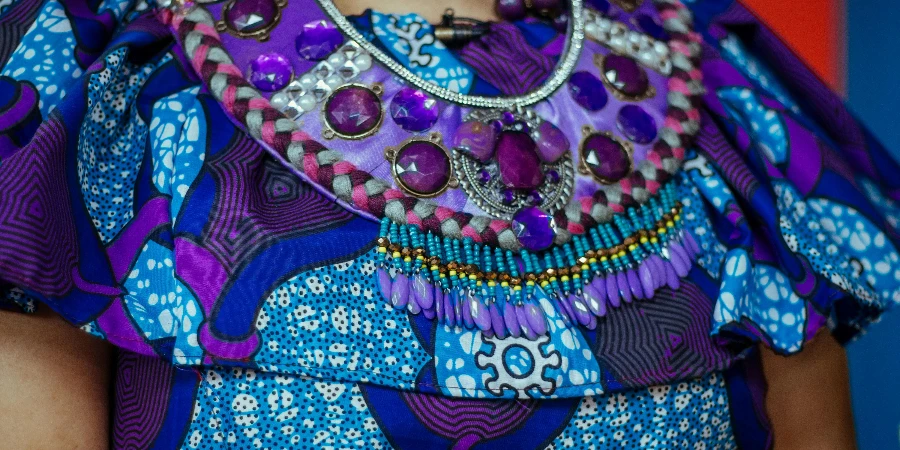In Africa the dress is not just a piece of clothing but the portrayal of culture, heritage and identity. The colourful and beautiful African attire dresses, with their loud patterns, bright colours and intricate cuts and looks, have fascinated people across the world. In today’s fast-paced fashion industry, African attire dresses has gone through the process of absorbing old traditions and elements into modern times. The result is a fusion of different cultures and time periods, making it even more colourful and beautiful.
Here, we will examine the profound influence of African attire dresses, the reasons why they came to be so popular, how these two factors were combined to give rise to different styles, the fabrics they are made of, the way they have been adapted to the modern world, the ways to style them – all these and more as we journey through the world of African dresses.
Table of Contents:
1. Cultural significance of African attire dresses
2. Diverse styles and regional variations
3. Fabrics and textiles in African attire dresses
4. Modern adaptations and global influence
5. Styling tips and occasions for African attire dresses
Cultural significance of African attire dresses

African dresses represent an integral part of the continent’s cultural heritage. And although they are a form of clothing, they are also a language, a way of communicating information about the wearer that doesn’t rely on spoken words: the person’s social status, their tribe and region of origin, or a life event. In many African cultures, certain styles, colours and patterns are worn only by members of a certain tribe or region, or at a specific time in an individual’s life.
Colour even takes on cultural significance for the Akan people of Ghana, such as when they wear the Kente cloth that’s an integral part of their lives. Like fancy textile designs from other cultures, each Kente pattern and its colour combination has a meaning, often a proverb or tale of history, illustrating the distinction between Ghanaian and other West African designs. Mud cloth (bogolanfini) of Mali, meanwhile, is a painted pattern of bold and geometric designs formed by their unique dye techniques. Its prominent stripes and motifs tell the stories of cultural beliefs and social values.
These dresses are also worn on other, often significant, occasions. For instance, wedding dresses often have a special colour or pattern that conveys a certain meaning. In some communities, brides’ dresses might have elaborate bead or embroidery work, which can be dozens of hours’ work by local artisans to complete. This is just another way that dress helps African cultures to pass their heritage from one generation to the next.
Diverse styles and regional variations

‘African attire dresses’ is a broad term for women’s dress in Africa, encompassing diverse styles and silhouettes. From clothing styles such as the boubous of West Africa and the tailored kitenge dresses of Eastern Africa, to the diversity in fabric and fibre, dress styles on the continent are characterised by their local climates, lifestyles and cultural influences.
A women’s ‘national costume’ in Nigeria is the iro and buba: iro, a wrapped skirt; buba, a loose-fitting blouse, worn in many variations and with a head tie of cloth, known as a gele (which can be elaborately folded into amazing architectural folds). In Ethiopia, women’s traditional dress is a long white cotton dress, known as a habesha kemis, sometimes heavily embroidered around neckline, shoulder and hem.
Shweshwe fabric dress from South Africa or Lesotho. Photo by Lewis Blackwell/Panos for FAOShweshwe, the patterned fabric from South Africa or Lesotho, originally sold by German settlers in the 19th century, has become so associated with Africa that it is now seen as African, with people usually wearing it as an entire dress, and customising it for weddings and other official attire. It is a dress, then, that emerges from regional variation, from the creativity of people on the ground looking to take something from elsewhere and transform it into something fitting for their own people.
Fabrics and textiles in African attire dresses

As multifaceted as the styles themselves, the fabrics used for African dresses are equally diverse and important. The purpose of using traditional textiles is the main reason why these dresses are authentic and have a deep cultural value. The most popular fabric used in African clothing is ankara (also called Dutch wax print or African wax print). Although this fabric has a contested history because of its European manufacturers, it has become a strong symbol of African fashion, appreciated for its exciting patterns and bright colours.
Another is kente, a vibrant and colourful geometric textile traditionally woven in Ghana. Kente takes its name from the Akan word kenten, meaning basket weaving. Each pattern of kente cloth has a name and a meaning, and consists of intricate interwoven lines created using highly specialised skills and tools, passed down through generations. In Nigeria, the beautiful indigo-dyed cloth called adire is also produced by resist-dyeing techniques.
in the last decade, there has been a clothes movement to revive and preserve indigenous African textiles. Hand-woven aso oke from Nigeria, for example, has recently been appropriated by contemporary fashion designers to create dress designs. This important mélange of the old and the new preserves cultural techniques, supports local artisans and promotes sustainable fashion.
Modern adaptations and global influence

There has been a trend of traditional attires in African dresses being adapted to modernities, suiting a rise in global life styles. The modernisation of African fashion has brought about an increase in African designers reinterpreting forms of traditional clothing. This has incorporated African elements into stylish silhouettes and makes African attire dresses more palatable to a wider audience while still having a cultural impact.
The most exciting trend is the mixing of African prints with Western-style dresses. Designers are beginning to use ankara fabrics to make everything from office wear in a tailored style to floor-length evening gowns. It’s a way to bring African clothing into the working wardrobe, modernising the look. There’s also increasing interest in ethical and sustainable fashion with some designers focusing on non-organic materials that are grown locally and produced ethically, sometimes following the guidelines of fair trade.
Influenced by African attire dresses, many designer houses and international designers have incorporated African textiles and dress styles into their collections. Today, African fashion has gained international acknowledgement with African designers taking their position on the global fashion stage. African attire dresses are no longer worn only at cultural events or with specific communities. African attire dresses have earned a place on the world fashion stage.
Styling tips and occasions for African attire dresses

For instance, the shifting nature of African attire dresses makes it appropriate for simple outings, work, and formal occasions. For general wear, a shift dress made from ankara fabric and paired with flat sandals and minimal accessories makes for a comfy and stylish day outfit. The blazer and closed-toed shoes add formality to this shift outfit for office wear.
More elaborate styles might be more appropriate for formal occasions such as a wedding, or a celebration of a major cultural event: a full-length gown in rich embroidered fabric can be very impactful. Again, it is imperative to consider context – the type of event you’re attending and its associated dress code. Accessories are vital to finessing this look – traditional beaded necklaces, metallic bangles or a colourful head-wrap.
For African attire dresses, you should be careful about the balance between the print, the embroidery and accessories when styling. If it has a colourful print or intricate embroidery, accessories should be kept simple so the dress can speak the loudest. Conversely, if it’s a plain solid colour dress, you can add some statement jewellery or a head wrap with a pattern. I personally would say that a great way to begin styling African attire dresses if you’re new to the style is with subtle prints or modern cuts.
Last but not least, remember that confidence is your best accessory. When you wear dresses made of African attires, you’re not only keeping up with trends or joining the bandwagon, you’re promoting culture and expressing yourself. Shine with the vigorous colours, bold motifs and cultural richness, and wear them with pride.
Conclusion
African attire dresses are a beautiful fusion of tradition and modernity, a perfect way to incorporate cultural heritage into fashionable attire. From the rich cultural meaning to the vast variety of styles and the ability to adapt to modern trends, these dresses continue to be exciting and inspirational. We have seen how African attire dresses are not just mere clothing; they are also ways of telling stories, expressing identities and preserving cultures. Whether you love the bold shapes or the exquisite designs, the fine craftsmanship or the deep history, the possibilities of creativity and personal expression of African attire dresses are ripe for the picking.




